 enlarge this image
enlarge this image Lake Mead, the greatest reservoir within the nation, has reduced in size so low there is issue the Hoover Dam will soon be unable to generate hydropower. Kirk Siegler/NPR conceal caption
toggle caption Kirk Siegler/NPR
Lake Mead, the largest reservoir in the nation, has reduced in size so low there may be problem the Hoover Dam will soon be unable to generate hydropower.
Kirk Siegler/NPRLAS VEGAS — at the present time it may feel well-nigh cliche to throw around the notice Dystopian. nonetheless it's tough now not to make use of it whereas standing on the slender highway crossing the Hoover Dam as tourists gawk on the hulking constitution's uncovered columns that for decades were underwater.
"or not it's incredible to see the water so low," says Arthur Murzeau, who's on holiday in Las Vegas from Belgium.
Lake Mead, the nation's largest reservoir, is so low it's getting perilously close to what's referred to as "deadpool," the degree where the dam's hydropower generators would be shut off for the primary time in its 86 yr heritage.
"I feel we want [politicians] to take actions," Murzeau says. "We want americans to react and to be actually aware of what's going on."
but are sufficient americans conscious?
Even in the worst drought in 1,200 years, and despite repeated alarms, each day lifestyles hasn't definitely modified for many of the forty million americans who count on the Colorado River for drinking water.
Cities and water managers are pleased with the conservation options and work-arounds they've discovered to stay away from a crisis. however commute throughout the epicenter of the western megadrought, and you will locate a lot of people who're coping with, or on the cusp of, dire consequences.
Leaving 'Mas Vegas'travel south of the Hoover Dam and motorway ninety three descends into Arizona, a spot people proceed to circulation to faster than virtually another state. Even in the driest and most barren searching locations, including the unincorporated area every so often nicknamed "Mas Vegas," buildings and RVs pockmark the desolate tract shrub. real property signs line the toll road and side roads promoting low-priced land - a hundred acres right here, one hundred sixty there.
Communities with names like Doland Springs, or nearer to Phoenix, Rio Verde Foothills, sound like false guarantees when it comes to water.
In Rio Verde on the some distance northeastern fringe of the Phoenix sprawl, Karen Nabity looks to be certainly one of a number of activists sounding the alarm. She's a realtor but is dismayed that individuals are nevertheless being allowed to purchase and construct in places like this.
"They will not have a disclosure to the proprietor of that property to say, 'you might be building this condo, however did you know on January first we don't have a water supply for you.'"
development continues mostly because of free zoning in Maricopa County - one of the most nation's quickest becoming - and loopholes in Arizona water law.
This January first, some 500 buildings within the Rio Verde Foothills neighborhood, Nabity's protected, are dropping all their water. it really is as a result of regional Scottsdale, which gets most of its water from the Colorado River, now says there is not enough to go round anymore. And its lengthy standing start software will stop.
 enlarge this photograph
enlarge this photograph Karen Nabity's home, and a few 500 others in her regional outside Phoenix have been instructed they may be bring to a halt from water as a result of cuts in deliveries from the Colorado River. Kirk Siegler/NPR cover caption
toggle caption Kirk Siegler/NPR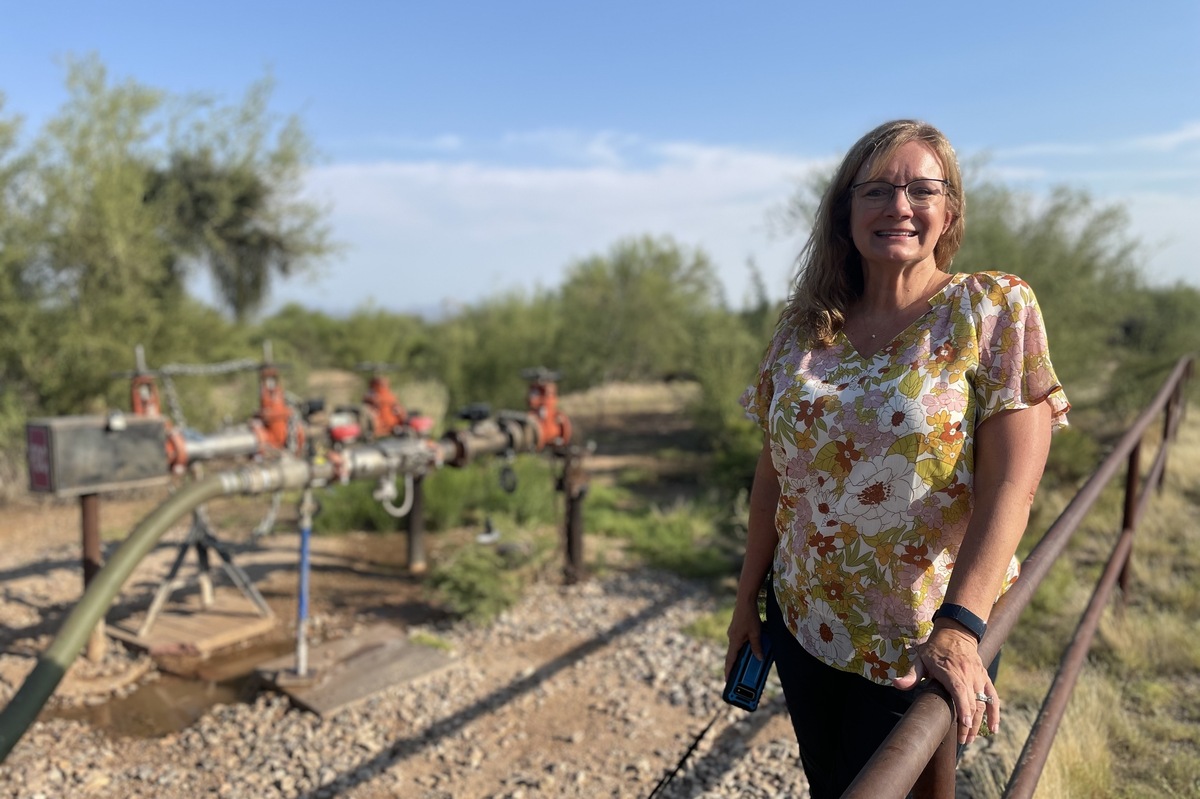
Karen Nabity's home, and some 500 others in her nearby outdoor Phoenix had been told they'll be cut off from water because of cuts in deliveries from the Colorado River.
Kirk Siegler/NPRbear in mind "deadpool" up in Lake Mead? Nabity concerns or not it's coming sooner than anticipated.
"The Colorado River won't be flowing, water may not be flowing down the [Central Arizona Project] canals, that should still be an 'oh shit' to this complete state," Nabity says. "i am an Arizona native and for God sakes awaken Arizona, we need to do whatever thing and we deserve to do it now."
The conclusion of water deliveries wasn't a surprise, Nabity says. They have been first notified back in 2016 that they'd eventually should locate an extended time period water source. She's been attempting to organize her neighbors to kind a water district which may then exit and buy farm land and its water rights. The water might then be trucked to taps here next year. it be normal in Arizona however up to now Maricopa County has denied their plan.
"what is our state doing? people are still planting grass, individuals are still watering yards. We deserve to have our state step up greater and start doing greater cutbacks now," Nabity says.
Arizona's "secret" underground reservoirsOne reason it may possibly believe like company as standard throughout huge swaths of city Arizona is as a result of for decades now, many cities were storing their felony share of Colorado River water underground.
 amplify this photograph
amplify this photograph Tucson's water director John Kmiec stands subsequent to a basin of Colorado River water. Kirk Siegler/NPR cover caption
toggle caption Kirk Siegler/NPR
Tucson's water director John Kmiec stands next to a basin of Colorado River water.
Kirk Siegler/NPRTucson's water director, John Kmiec, is standing on a patch of wasteland shrub greater than 330 miles from the shrinking river, from which his metropolis gets the majority of its ingesting water.
"we now have a scarcity on the Colorado River however's basically no longer going to affect the Tucson basin as a result of we have banked greater than five and a half years of excess Colorado River water in these aquifers already," he says.
that you could consider of it like a secret reservoir hidden below this big Sonoran desert with its blazing sun and saguaro cactus. About thirty miles west of the city on a plot of former farm land lies a collection of forty acre basins - some naked dust, some maintaining water that has yet to seep into the soil.
"We fill these big reservoirs up, they look like small lakes. but what's definitely going on is the water is slowly going down and percolating into the aquifer and changing into groundwater," Kmiec says.
 amplify this graphic
amplify this graphic A basin the place the metropolis has been "banking" its excess Colorado River water for two decades. Kirk Siegler/NPR cover caption
toggle caption Kirk Siegler/NPR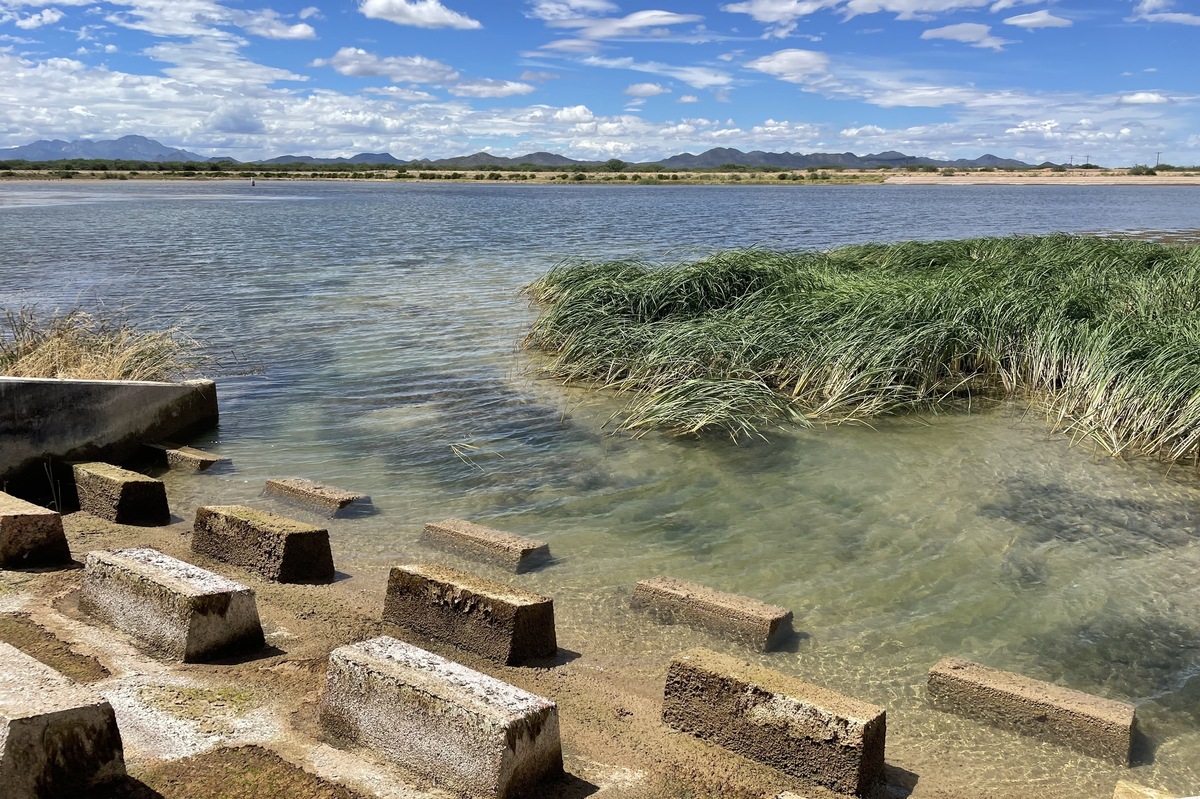
A basin the place the city has been "banking" its excess Colorado River water for two a long time.
Kirk Siegler/NPRFor greater than 20 years now, Tucson has been making ready for this crisis, implementing aggressive conservation measures as well as pumping its legal share of Colorado River water from the federally built CAP canal into the floor. Arizona pioneered "water banking" because it had to, says Kathryn Sorensen, a water policy professional at Arizona State college.
Sorensen, who used to run Phoenix Water, says Arizona has long wide-spread its water rights are junior to California's, in order that they have to bank the river water they're given and aggressively conserve the leisure.
"I consider the knowledge that water planners in Arizona have is that it is a desolate tract, and we do have decrease priority water to the Colorado River. so you understand to devise for worst case," she says.
Farms are shrinking speedyWill Thelander has his personal idea for why individuals in most Southwestern cities don't seem to be panicking at this time. Cities, he says, can greater effectively spread charges throughout big populations, and raise sufficient funds to go out available on the market and find and purchase high priced water.
Thelander, 35, farms in Pinal County, a infrequent, but shrinking piece of open barren region between the encroaching sprawl of Arizona's two greatest cities, Phoenix to the north and Tucson to the south.
Thanks largely to the Colorado River, Pinal County is - or became - one of the crucial most productive farming areas within the u.s.. it be a large producer of alfalfa, corn for cattle feed and cotton, even in one of the most well liked and driest areas on the earth.
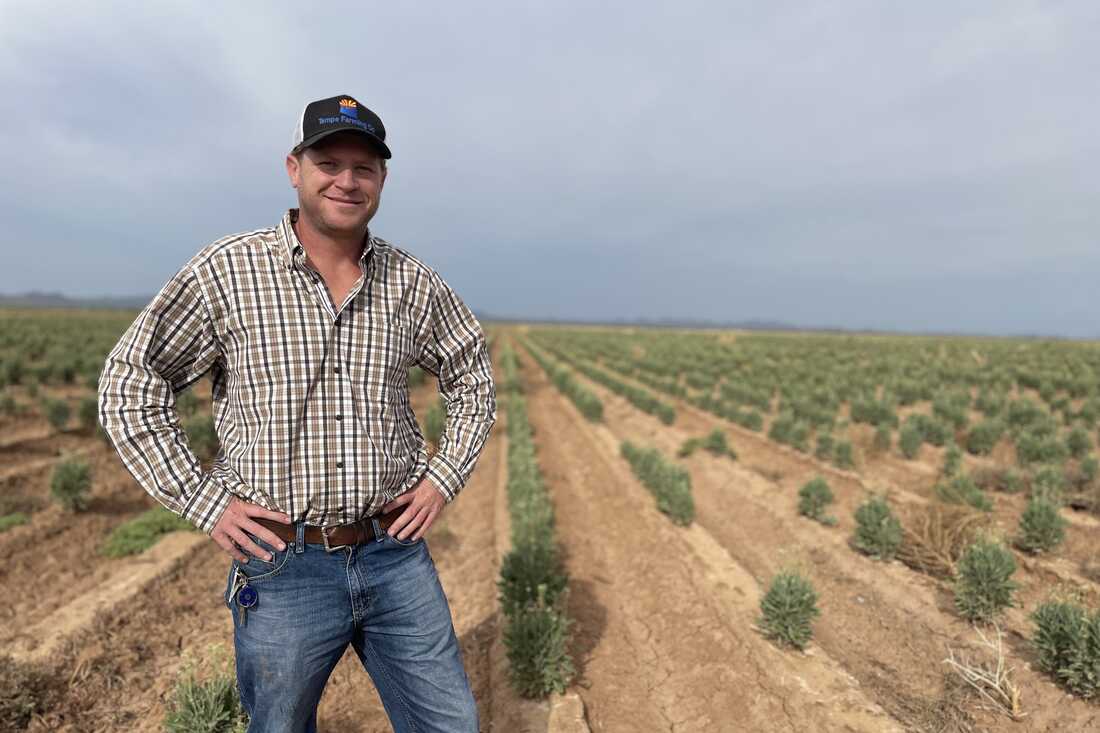 magnify this photograph
magnify this photograph Will Thelander's household farm in Pinal County, Ariz. had to decrease by half as farmers there lost all of their Colorado River water deliver as a result of mandated cuts. Kirk Siegler/NPR disguise caption
toggle caption Kirk Siegler/NPR
Will Thelander's family farm in Pinal County, Ariz. needed to decrease by means of half as farmers there misplaced all of their Colorado River water provide due to mandated cuts.
Kirk Siegler/NPR"So i know all and sundry says that," Thelander says. "My preliminary response is, why did each person flow to a desolate tract? so that you can build a metropolis here but you cannot do other issues?"
This drought is forcing Thelander to do different issues. For starters, he is resorting to pumping groundwater as a result of farmers during this county aren't any longer getting any Colorado River water deliveries because of cutbacks. Pinal County users are often far junior to their counterparts in California in the century old legal guidelines that govern the river, so when there is a shortage they get bring to a halt extra quickly.
because of the cutbacks, Thelander's farm has shrunk through about 50% this yr. Figuring he can not count on Colorado River water anymore, he's began turning out to be a brand new crop, a wilderness plant called guayule that produces a herbal rubber for tires. It also uses 1 / 4 of the water his traditional crops do.
"it may well deliver a different avenue for economics and liable water use right here within the Southwest," Thelander says.
 magnify this photograph
magnify this photograph Farmer Will Thelander has begun growing a much less water intensive wasteland crop known as guayule that produces a natural rubber for tires. Kirk Siegler/NPR hide caption
toggle caption Kirk Siegler/NPR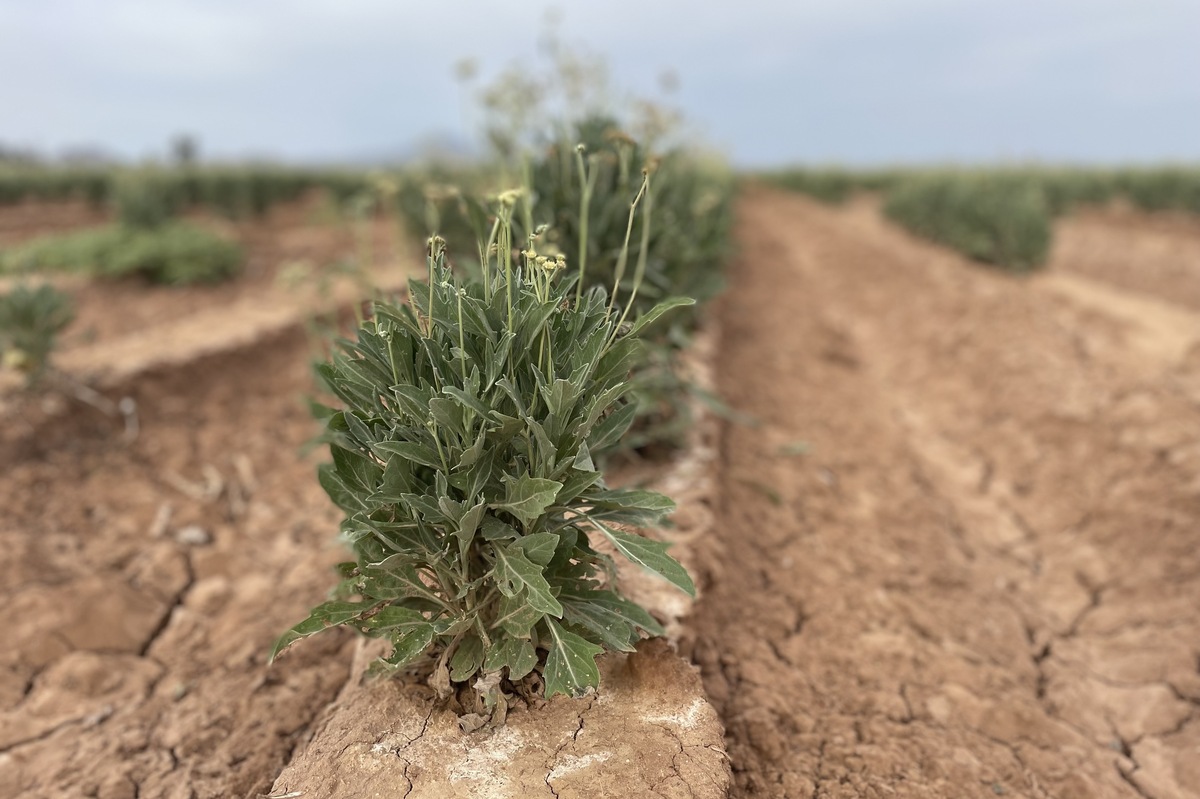
Farmer Will Thelander has begun transforming into a much less water intensive barren region crop called guayule that produces a herbal rubber for tires.
Kirk Siegler/NPRthis is the first yr in recent reminiscence that there might not be any cotton in the ground on the family farm. The field next to him lies fallow, it's complicated now not to see a reckoning coming. The system of dams, pipelines and canals that help farms and cities that made the Southwest growth have been built at a time when americans notion the Colorado would always have extra water. Even amid listing boom, cities still devour a fraction of the water that farms gulp up within the Southwest.
"You can't simply go, neatly, or not it's the barren region and they're out of water, so we are going to develop food elsewhere," Thealander says. "These industries have taken fifty to 100 years to establish, or not it's means greater complicated than that."
Why are we nevertheless calling this a 'megadrought'?it be clear the 23 12 months megadrought in the Colorado River basin is complicating every thing. and some are beginning to question why it be nevertheless even being known as a drought as a result of that term suggests it may end.
For Tucson city councilman Steve Kozachik, or not it's a false hope.
"this is the local weather reality that we're dwelling in," he says.
In Tucson, like in much of the rest of the Arizona, you don't see many signs in hotels or eating places urging water conservation. On a fresh evening, misters outdoor native cafes and bars sprayed water full bore in 105 degree heat to chill purchasers. Kozachik recently urged city leaders to leave its share of Colorado River water in Lake Mead, partially for the metropolis to steer through example and force different clients to the negotiation desk.
he is not satisfied that a 5 and a half year provide "banked" within the ground is plenty of a cushion.
"Three years from now, five years from now, whenever it's, we will all be standing along the banks of the Colorado looking at a dry riverbed, saying all I did turned into take what i was entitled to, and we sucked it dry," he says.
across the river basin in Nevada, Arizona and California, water managers are purported to be determining plans to dramatically reduce their water use, as water stages in Lake Mead continue to drop.
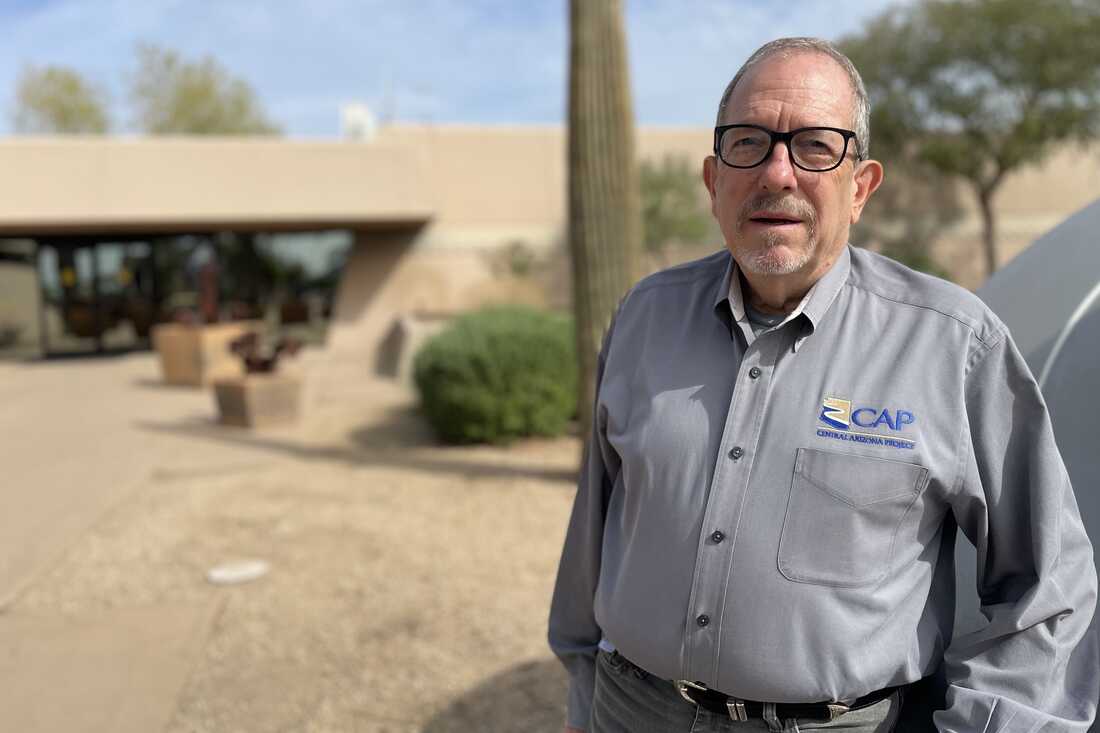 magnify this photograph
magnify this photograph Ted Cooke, general manager of the primary Arizona venture, says climate trade and drought has caught up with the long overallocated river. Kirk Siegler/NPR cover caption
toggle caption Kirk Siegler/NPR
Ted Cooke, common manager of the vital Arizona task, says climate exchange and drought has caught up with the lengthy overallocated river.
Kirk Siegler/NPRTed Cooke, everyday manager of the imperative Arizona undertaking, expects the federal government to implement mandatory cuts quickly since the lake is so overallocated. Water is being doled out - and users are expecting it to be delivered - as if it be still the the 1900s when the climate become wetter and fewer americans lived here.
"there may be not adequate water to head around and if we strictly interpret what the legislations of the river says, then you get to these ridiculous consequences," Cooke says.
Cooke says water managers had been in a position to hold Lake Mead particularly reliable considering 2014, however, "local weather change and the drought has caught up with us."
unwell of all of the Dystopian apocalyptic referencesLake Mead is currently at simply 28% of means. There are projections now it could fall to the dreaded deadpool - no extra hydropower and a whole lot less water - inside the next few years.
on the general marinas on its shoreline, Gail Kaiser's family company, the Las Vegas Boat Harbor, has had to select every thing up and flow farther out into the lake 9 times this 12 months on my own due to the receding shoreline.
"or not it's complicated 'trigger all you've got is bad publicity," Kaiser says. "You comprehend, the lake is still larger than Lake Mohave under us and Lake Havasu under that put together."
and he or she's tired of all of the doom and gloom and Dystopian references within the information and on social media.
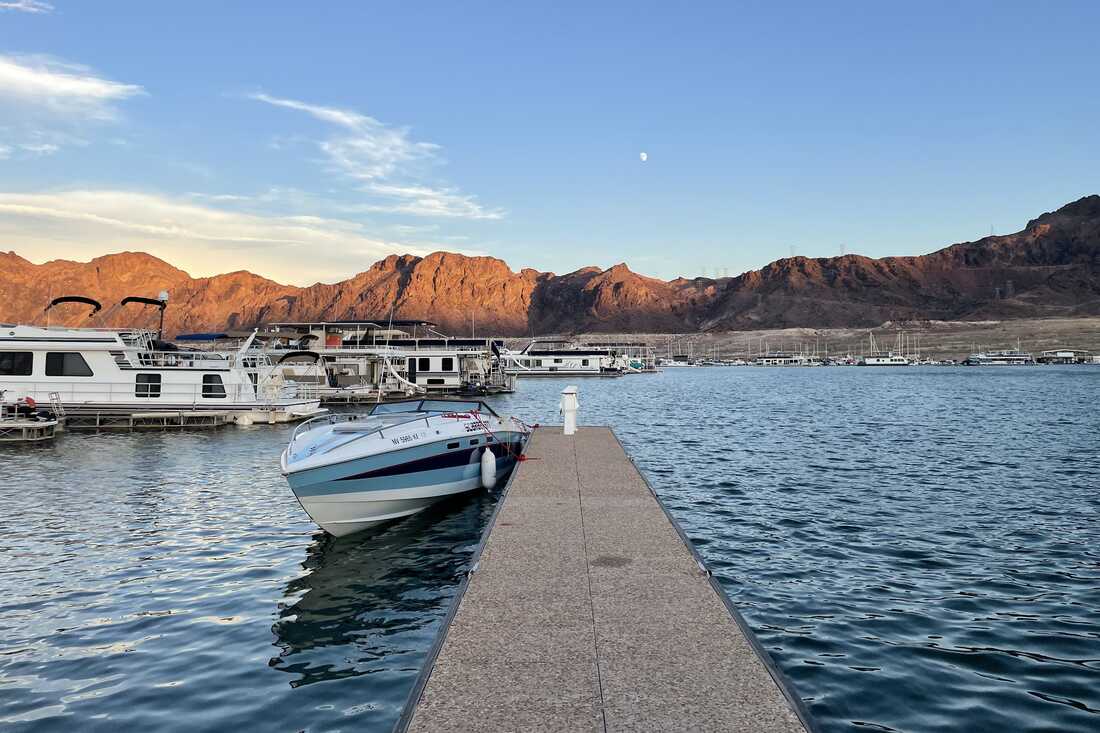 amplify this graphic
amplify this graphic Marinas alongside Lake Mead have had to be moved a few instances this year alone because the shoreline recedes. Kirk Siegler/NPR disguise caption
toggle caption Kirk Siegler/NPR
Marinas along Lake Mead have needed to be moved several instances this year on my own because the shoreline recedes.
Kirk Siegler/NPR"Is there a drought? fully there's a drought, and do we need to watch what we do with our water and conserve and do all these things it really is integral? yes, most likely, we reside in a wasteland. We should have always been doing that," Kaiser says.
but there may be still a huge pleasing lake right here, Kaiser says, with good boating and fishing. and she's fighting to keep it that way.

Post a Comment